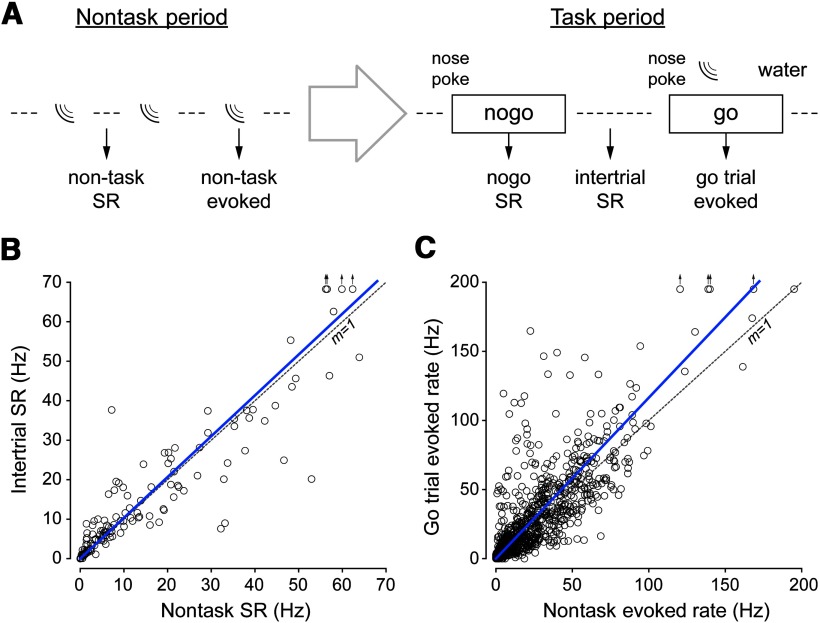Figure 1.
Effect of environmental context on neural activity. A, Schematic of an experiment session. During a nontask block (left), we acquired neural responses to tone stimuli (nontask evoked; sound wave symbols) identical to those presented during task performance. SR was assessed in between stimulus presentations (nontask SR). After a brief period (large, open arrow), the nose-poke and water spout were placed in the chamber and the task block was started. During the task block (right), animals initiated trials via a nose-poke. A water reward was delivered for a correct response on go trials. The analyses in subsequent figures are based on the discharge rate between trials (intertrial SR), during nogo trials at the expected target latency (nogo SR), and in response to the target (go trial evoked). B, SRs recorded during the nontask block are equal to those recorded during the intertrial period of the task block, as shown by the linear regression (blue line). For reference, a dashed line with a slope of 1 is plotted. C, The relationship between sound-evoked rates during the nontask block and the task block were more variable than for SR; however, on average, sound-evoked rates during the task block were significantly higher than in the nontask condition, as shown by the linear regression (blue line). Only data for which at least 10 trials were obtained from the task blocks were included. A small number of points with values beyond the axis range are indicated by arrows.

